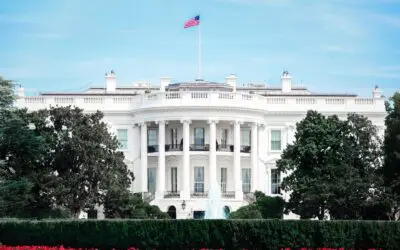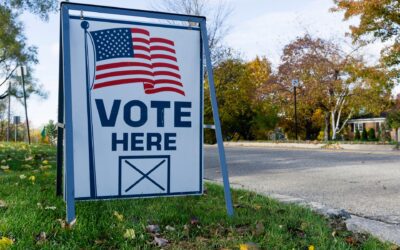The congressional battleground districts for 2010 may not act to type, according to a new survey by Democracy Corps and Greenberg Quinlan Rosner Research in the 40 most marginal Democratic seats where nearly all expect Republicans to reclaim lost ground and the 15 most marginal Republican seats where incumbents should be safe. But as most commentators stop to contemplate the president’s first 100 days, they should also look at the congressional dynamic. With Congress poised to vote on the president’s budget, the Democratic incumbents are winning over 50 percent of the vote — stable over the last three months — and hold double-digit leads against their generic challengers. Indeed, the Democrats in the most difficult 20 seats (top tier) enjoy a lead twice the size of that for the most vulnerable Republican incumbents who fail to top 50 percent and who lose ground after the budget debate in this survey. Republicans are still on defense, while President Obama remains very popular across all of these districts.[1]
Although the incumbents are fairly popular personally, at this early point they get just lukewarm numbers wanting to “reelect” them (with the top Republican incumbents weaker), suggesting that voters still remain to be convinced and that many of these incumbents could still face competitive races, at least in the top tier of seats. But the combination of President Obama’s strong standing and the continuing tarnish on the Republican brand leaves the Democratic incumbents in a much stronger position.
These Democratic incumbents lead their generic Republican challengers across the 40-district battleground by a 13-point margin (52 to 39 percent), unchanged since our last survey in January.[2] Even those Democratic incumbents in the most marginal seats now break the important 50 percent threshold on the vote (51 to 39 percent). The same is not true for the most vulnerable Republicans. Our first look of the cycle at the seats representing potential Democratic pick-ups shows the Republican incumbents under 50 percent and holding just a 6-point lead over their generic Democratic challengers (48 to 42 percent). The incumbents’ weakness is only exasperated by President Obama’s popularity across a battleground that he carried by 8 points in November.
Even more troubling for these Republican incumbents is that their support is easily eroded when they are tied to their party’s opposition to President Obama’s economic agenda. After we play out a simulated debate on the economy, the Republican members lose significant ground. They fall into a dead heat with their generic challengers (46 to 45 percent in favor of the Democrats) after facing attacks on their vote against the president’s economic recovery and budget plans, particularly their opposition to changing the Bush economic policies that favored the wealthy and corporations over the middle class. By comparison, even after being attacked for wasteful spending, the AIG scandal and raising taxes, the Democratic incumbents maintain their 13-point advantage.
The current political environment remains tilted in favor of the Democrats and is shaped by the state of the parties and the president’s immense popularity. The Republican brand remains very weak, particularly in the Republican-held districts where the party holds a negative16-point net favorability rating (31 percent favorable, 47 percent unfavorable), and by a large margin Democrats are trusted more than the Republicans to do a better job on most issues in both the Republican and Democratic-held seats. Meanwhile, the president is nearly as popular across this battleground as he is nationally, with high personal favorability ratings and job approval ratings of 56 percent in the Republican-held seats and 55 percent in the Democratic-held seats. Moreover, Obama holds an enormous lead over the Republicans on nearly every issue tested, leading in the Republican districts, for example, by nearly 40 points on “working in a bipartisan manner” and dominating on the economy, energy and health care, while breaking even on the budget deficit.
The president’s popularity is one major reason these Republican incumbents are so vulnerable. Indeed, more voters in these Republican districts say that they want to be able to vote for a Democrat who will work with President Obama than say they will vote to reelect their representative (47 to 43 percent), and that margin extends to 46 to 33 percent among the swing voters that will be critical in 2010.[3]
Democrats lead on nearly every issue even in the 20 most competitive Democratic seats, though the Republicans’ margin on the budget deficit, taxes and government spending is larger in these districts.
As the debate over the president’s economic policy rages and we head into the final vote on Obama’s budget, the strongest reason for voters to support the Democratic incumbents was their work to pass a budget and recovery plan that includes greater care for our veterans and investments in alternative energy. The most potent attacks on Republican incumbents centered on their votes against the biggest middle class tax cut in history and their rejection of President Obama’s economic policies in favor of the same Bush policies that continue to favor the wealthy and corporations over the middle class.
Democratic Incumbents Solid; Republicans More Vulnerable
In our second survey in the 40 most marginal Democratic-held seats, we see the Democratic incumbents holding a stable 13-point advantage (52 to 39 percent, virtually unchanged from January) with those in the most competitive seats leading their Republican opponents 51 to 39 percent. Across the Republican battleground, the incumbents’ lead is half that – they lead their Democratic challengers just 48 to 42 percent.
While the Democratic incumbents are in stronger electoral position, it is important to note that they could still face competitive races. While they do well on being “honest,” “fighting for the people in their districts” and being “in touch,” barely 40 percent of voters say they will definitely or probably vote to reelect their member of Congress, with similar numbers in Republican districts.[4],[5] At the moment, the tide is still helping Democrats, with a good plurality saying they want to reelect their Democratic representative because they will fight for change, while in the Republican seats, a plurality says they want to vote in 2010 for a Democrat who will work with President Obama.
Even more troubling for these Republican incumbents is the softness of their support. After we play out a debate over President Obama’s economic policies, voters shift a net 7 points toward the Democratic challengers, erasing the 6-point advantage the Republican incumbents held and moving the race to a dead heat. The economic debate not only brings home the Democratic base (moving Democrats by a net of 9 points), but also wins over a highly receptive middle.
Budget Favored in Republican Districts, though Support Split in Most Competitive Democratic Districts
Voters in the Republican districts support the president’s budget by a 9-point margin (51 to 42 percent); notably, that margin is much wider among swing voters (57 to 31 percent). Meanwhile, voters in the second tier of competitive Democratic-held seats support the budget by a 12-point margin (50 to 38 percent). However, among those in the top tier of the 20 most competitive Democratic-held seats, support is split.
The split support for the budget in the most competitive Democratic districts is clearly driven by those voters’ greater anxiety about taxes, spending and the deficit. Indeed, while a solid majority of voters in the second tier of Democratic seats and the Republican battleground agree that it is currently necessary for the government to spend money to get us out of the recession, a 54-percent majority in the top tier of Democratic seats disagree, believing, rather, that such government spending will prolong the recession and damage our economy in the long-run. That is reflected in how the two parties stand on these issues. While Democrats fight to a draw on spending, taxes and the deficits in the second tier of safer districts, in the top tier of most vulnerable seats, the Republicans are preferred by between 4 and 10 points on each of these issues, with voters split on which party gets taxpayers most value for their tax dollars.
President Obama, on the other hand, bests the Republicans on all of these issues in both tiers, including leads of 6 and 14 points on the deficit in each tier respectively. And importantly, even after the most vulnerable Democrats are attacked on these issues, their vote remains stable at the end of the survey.
The strongest affirmative argument for the Democratic incumbents centers on the expansion of benefits for veterans included in the budget. Nearly half (45 percent) say that this statement makes them much more likely to support the Democratic incumbent, and nearly seven-in-ten (69 percent) say it makes them much or somewhat more likely. An affirmative message centered on the investment in alternative energy in the Obama economic recovery plan also tests strongly (40 percent much more likely, 59 percent much or somewhat more likely).
As noted, Republican incumbents have great cause for concern over the electoral consequences of their opposition to the president’s economic plans. The strongest attacks against Republicans are centered on their opposition to the largest middle class tax cut in history, as contained in the recovery package, and their rejection of President Obama’s economic policies in favor of a continuation of the Bush approach of tax cuts for CEOs and the wealthy instead of for the middle class (each making 42 percent of voters much less likely to support the incumbent).
Democratic incumbents must be cognizant of the danger of being labeled ‘big spenders;’ the strongest negative against the Democrats centers on their support for 1.2 trillion dollars in new spending in the stimulus and omnibus bills, and the increase in deficits found in Obama’s budget (46 percent much less likely). An attack on Democrats for their “$3,100 energy tax” is also potentially dangerous (44 percent much less likely).[6]
Those attacks get some traction because there are real concerns about the budget deficits. The Democrats lost 10 points of support on that issue, now dividing evenly with the Republicans. And when we make a broad argument, a plurality agrees with the cautious Republican statement centered on their “Democrats are spending too much, borrowing too much and taxing too much” argument.
Democrats Continue to Enjoy Stronger Brand
The Democratic brand remains stronger than the Republican across all of these marginal districts. Democrats enjoy a net favorability rating of +3 (43 percent favorable to 40 percent unfavorable) while voters rate the Republicans much more negatively (net favorability of -11, 32 percent favorable to 43 percent unfavorable). President Obama adds to the strong Democratic brand by remaining immensely popular across all 55 of these marginal districts as he holds a mean thermometer rating of 60.1 with 56 percent rating him favorably, compared to just 30 percent unfavorably.
[1] This memo is based on a survey of 1,500 likely voters (1,000 in the 40 most competitive Democratic-held congressional districts and 500 in the 15 most competitive Republican-held congressional districts) conducted April 16-21, 2009. For a complete list of the districts, visit www.democracycorps.com
[2] Based on poll in the 40 Democratic-held districts conducted January 14 – 19, 2009 of 1,200 likely voters. Note that since January, the IL-08 has been removed from the Democratic battleground and NH-02 had been added. Data from IL-08 has been filtered out of the January survey for comparative purposes.
[3] Using a unique algorithm developed by Greenberg Quinlan Rosner, all voters are rated on their level of commitment to a particular candidate on our 8-point “Voter Choice Scale.” “Swing voters” are the most persuadable voters and fall into the middle four categories on this scale.
[4] The incumbent’s name was inserted in each district for this exercise.
[5] Democratic incumbents in the top tier actually have slightly stronger reelect numbers, at 41 percent compared to 37 percent in the second tier of Democratic seats. This is balanced out by the much stronger partisan advantage the Democratic incumbents enjoy in the second tier.
[6] See attached frequency questionnaire for full messages and results.




